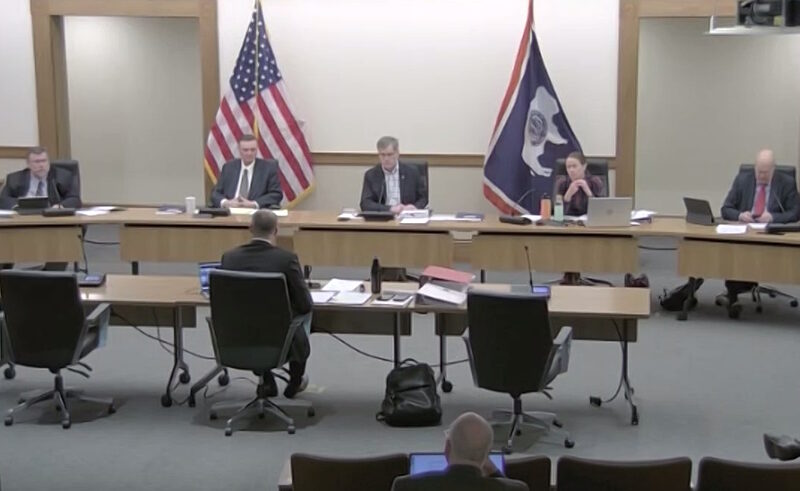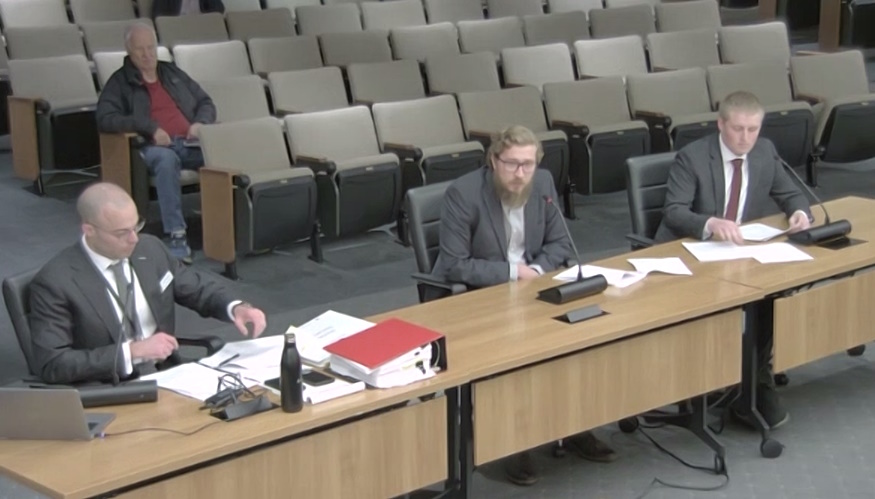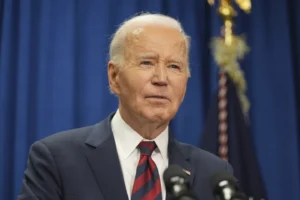Wyoming Stable Token Plans Delayed After Surge in Interest
State still plans to launch its digital dollar next year
- Published In: Politics
- Last Updated: Dec 24, 2023

At a Thursday meeting, the Wyoming Stable Token Commission eased off on its aggressive timeline for selecting vendors. The plan remains to launch the token in 2024. (Courtesy photo from the Wyoming Stable Token Commission via Zoom)
By CJ Baker
Special to the Wyoming Truth
When the State of Wyoming put out a call for vendors interested in helping develop a new digital version of the U.S. dollar, Treasurer Curt Meier figured the state would be lucky to get 40 or 50 responses.
But between mid-November and mid-December, the Wyoming Stable Token Commission’s “request for information” yielded responses from 213 people and 92 different companies.
The commission’s executive director, Anthony Apollo, called it “a great response” that exceeded his expectations. But the high interest is also one of several reasons why he and the commission are pushing back their timeline.
Rather than selecting vendors early next year, the state plans to continue gathering information before issuing a formal request for proposal in March and picking contractors in July. It’s a roughly four-month delay, but Apollo said he still intends to fully launch the token in 2024.
“I would stick to that timeline of getting this thing live by the end of next year,” he said at a Thursday meeting.
Gov. Mark Gordon, who chairs the commission, said there are advantages to having the additional time, but he indicated the group will need to continue working with “expediency” and be ready to award bids by July 1.
“My concern is that we arrive at the finish line with both shoes on as quickly as we can,” Gordon said.
Wyoming’s stable token will be a digital representation of the dollar that can circulate on blockchains, theoretically enabling fast, cheaper and secure transactions and potentially serving as a foundation for “a new payment ecosystem.”

Under the state’s model, each token will be purchased with a real-world dollar, which the state will invest in short-term, low-risk government treasuries. Tokens can be redeemed for $1 at any time, while the state gets the potentially substantial profits from the invested cash.
There are already many dollar-pegged “stablecoins” issued by private entities, but Wyoming hopes its approach and status as the first government issuer will make its token more trustworthy.
Apollo said he thinks the interest from vendors is “in recognition of what the state has done and the mission that we’re on, because this is very unique.”
“And I think people both within the crypto and blockchain ecosystem, and even tangentially related to it, understand the potency of what it is we’re trying to do here,” he said.
Although he didn’t publicly name individual firms, Apollo said he spoke with 150 people from 66 companies over the past month and plans more conversations. That includes reaching out to Wyoming’s community banks, which have been deeply skeptical of the stable token project. Wyoming Bankers Association President/CEO Scott Meier has said he sees crypto as meant to “get rid of our banking system.”
Balancing privacy and security
Among other criticisms, Meier has also argued that “we don’t know anything” about crypto transactions, which opens the door to terrorists or foreign adversaries.
On Thursday, however, a former federal prosecutor and U.S. treasury official told commissioners it’s generally easier for law enforcement to track illicit actors that use crypto.
“The native qualities of public blockchains — traceable, trackable, immutable — allow us to follow the money in ways impossible in the traditional financial system, where networks of shell companies, hawalas, bulk cash smuggling, high value art and real estate are used by money launderers to obscure transactions,” said Ari Redbord, the global head of policy at blockchain intelligence company TRM Labs and a “fan” of Wyoming’s work in the digital asset space.

As one example, Redbord pointed to the individuals involved in stealing roughly $70 million worth of bitcoin from the crypto exchange Bitfinex in 2016. Although they went to great lengths to hide their stolen assets, the couple was caught in New York City last year and 80% of the bitcoin was recovered. Redbord also noted Hamas stopped accepting bitcoin after having many donations seized.
To thwart bad actors, most stablecoins contain programming that allows the issuer to destroy or recall them; commissioners indicated Wyoming’s token will likely need such a mechanism.
Apollo described it as a balancing act, where “John Q. Public can have confidence they’re gonna be able to use their token without having everything they’re doing under some surveillance, but we still have the ability to make sure that illicit actors are not using Wyoming stable tokens in an inappropriate way.”
Redbord said that balance is “the question of our time” in crypto, but he predicted new technology will provide solutions.
It’s among a number of questions the commission must answer before launching the token, from navigating an uncertain regulatory environment to choosing which technologies and blockchains to use.
On Thursday, the University of Wyoming’s Center for Blockchain and Digital Innovation presented an analysis of 15 different chains, but made no recommendations beyond ruling out Tron; Redbord said it’s the most popular chain among terror groups.
Apollo is now turning his focus to developing the commission’s business plan and preparing for a Jan. 12 meeting with the Legislature’s Joint Appropriations Committee.
Lawmakers provided the commission with $500,000 of start-up funding, and about $137,500 has been spent to date. For the upcoming biennium, Apollo has predicted the commission will need a more substantial $8 million to $12 million budget, which drew a couple negative public comments last month.
Gordon said Apollo and the commission have “been meticulous about conserving our funds — and that gives us a lot of opportunity to move forward.”













